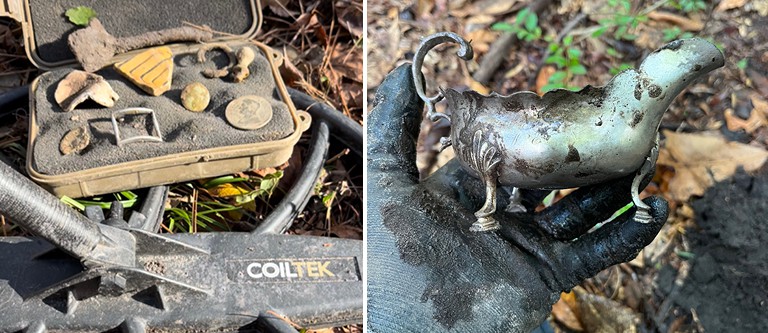Menu

Our September Detectorist of the Month, Andy Knox, has been hooked on detecting ever since a neighbour showed him military relics as a young child. Decades later, Andy has found his own pieces of history – from a 1795 dime to a pair of Revolutionary War-era sterling silver gravy boats.
Who or what inspired you to get into detecting?
I grew up in Texas and later moved to South Carolina. From a young age I’ve always had a passion for the outdoors and was constantly looking for treasures like cool rocks, fossils, or anything of that sort.
What prompted you to buy your first detector?
I first was introduced to metal detecting (or ‘real’ treasure hunting) by my grandparents’ neighbour Mr. Bob, when I was about 6 years old. He had just returned home from a trip in far west Texas, and on my grandparents porch he had displayed all sorts of military relics from the War of Texas Independence. I was instantly hooked, and nearly 30 years later have maintained close friends with Mr. Bob.
When did you first use your Coiltek coil?
I used my first Coiltek coil, the 10×5” NOX, for my Equinox 800 back in April of 2022.
Being a detectorist who favours hunting for 18th and 19th century artefacts where the woods are dense and the sites full of iron nails, I became an immediate fan of the 10×5” coil. It’s rugged, lightweight and well balanced, all while offering fantastic target separation without losing depth. It’s a piece of my treasure hunting arsenal that I do not leave home without.
How has detecting benefitted your lifestyle?
Metal detecting has allowed me to not only learn about and save history, but has also provided me with wonderful lifelong friendships, memories, a good bit of exercise, some amazing treasures, and overall a reason to be outdoors enjoying a hobby which I love!
What advice would you give someone to get started?
I have 3 pieces of advice I wish I knew early on in my career detecting:
What have been your best finds so far?
My most significant coin that I’ve found to date is a beautiful 1795 Flowing Hair Half Dime which was minted while George Washington was two years into his second term.
My most significant relic find is a pair of sterling silver gravy boats found at a British-occupied site near Charleston during the Revolutionary War, which were likely looted from a Charlestonian during the siege.
